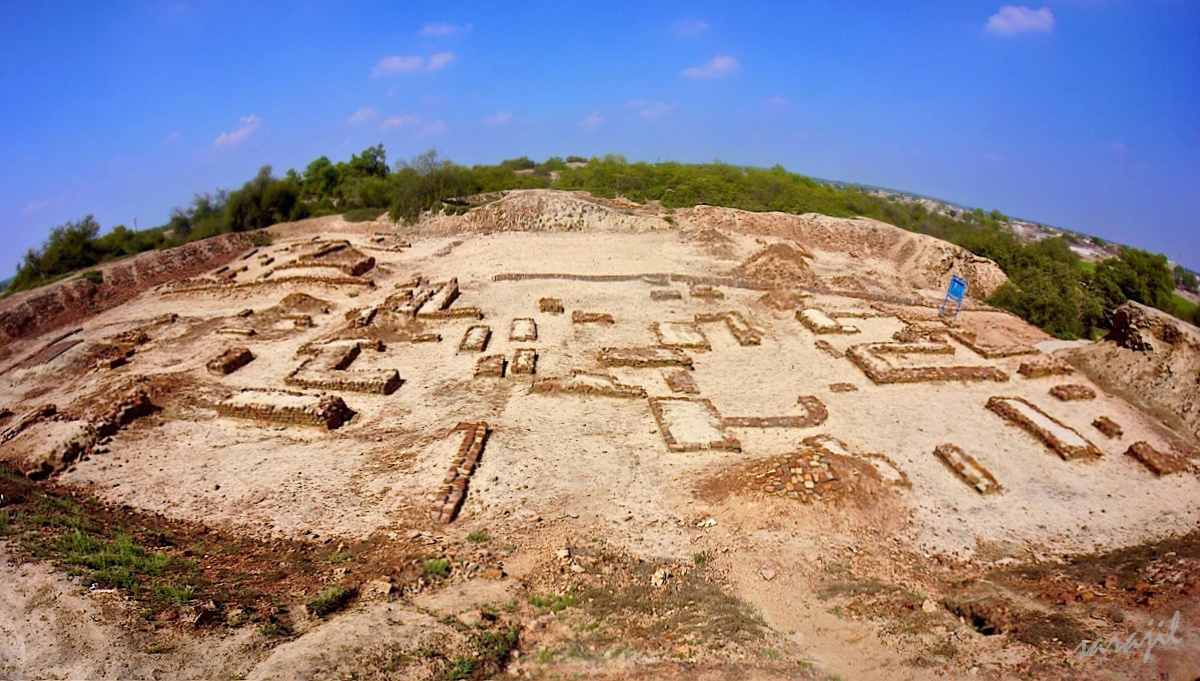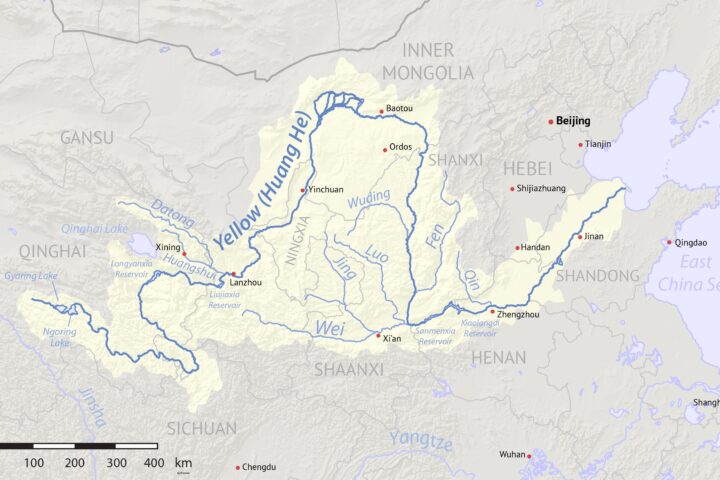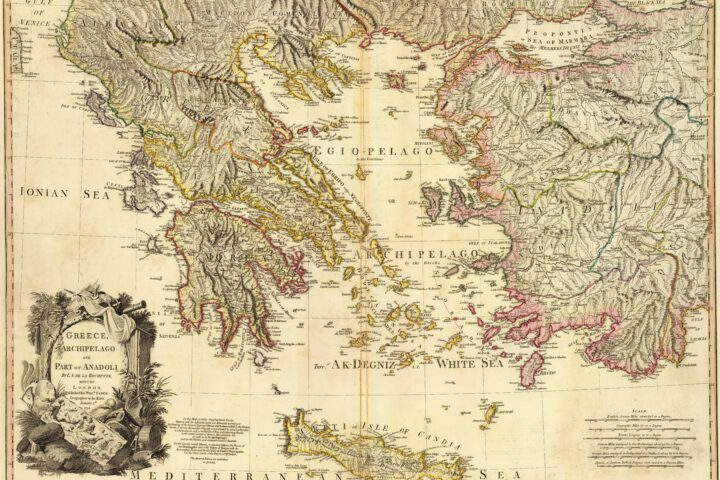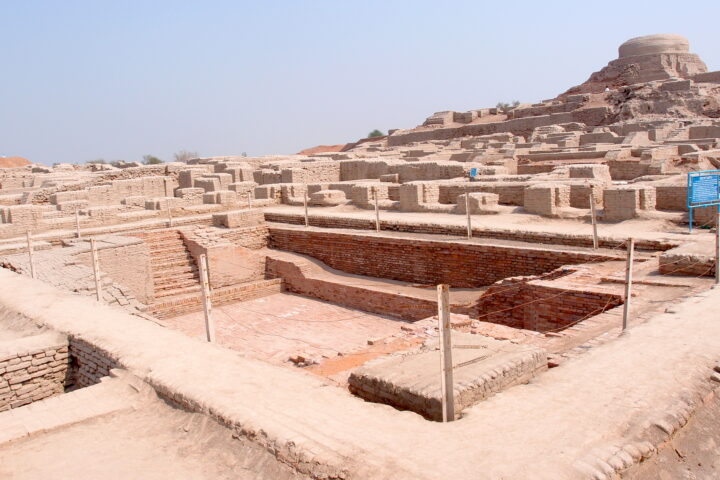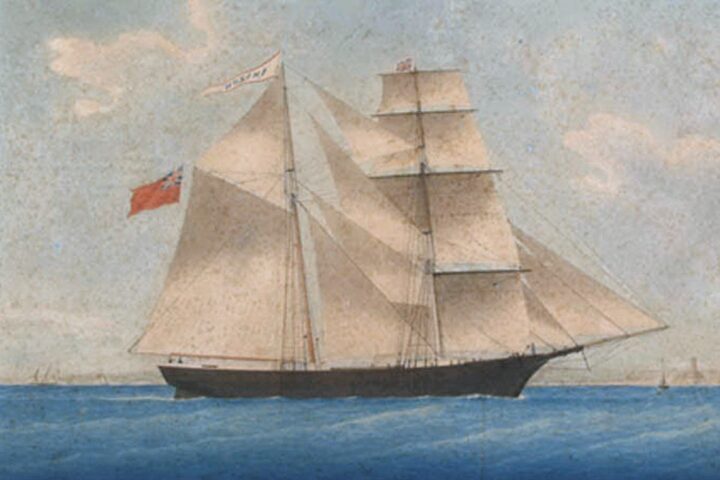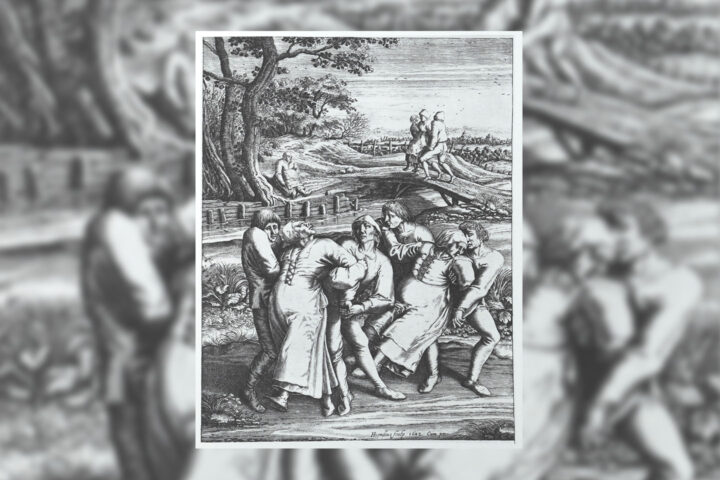Source: Indus_Valley_Civilization_-_Archaeological_site_of_Harappa_By Sara jilani – Own work, wikimedia_35282470
Nestled along the Indus River, a cradle of ancient human civilization flourished millennia ago. The Indus Valley Civilization, often overshadowed by its contemporaries in Egypt and Mesopotamia, was a complex and sophisticated society that thrived between 3300 and 1300 BCE. Its enigmatic nature, coupled with the challenges of deciphering its script, has shrouded this civilization in an aura of mystery.
Characterized by its urban planning, advanced sanitation systems, and standardized weights and measures, the Indus Valley Civilization exhibited a level of sophistication unprecedented for its time. Harappa and Mohenjo-daro, two of its principal cities, showcase a remarkable degree of urban planning, with grid-like street layouts, fortified citadels, and extensive public baths.
One of the most intriguing aspects of this civilization is its script, which remains largely undeciphered. While numerous attempts have been made to crack the code, the Indus script continues to baffle researchers. Despite this linguistic challenge, the Indus Valley people left behind a rich archaeological record, providing glimpses into their daily lives, trade networks, and religious beliefs.
The Indus Valley Civilization mysteriously declined around 1900 BCE, leaving behind a legacy of unanswered questions. The reasons for its collapse remain a subject of debate among archaeologists and historians. Climate change, natural disasters, or invasions have been proposed as possible factors.
Despite the challenges posed by the lack of a deciphered script, the Indus Valley Civilization stands as a testament to human ingenuity and resilience. Its advanced urban planning, sophisticated technology, and enduring cultural legacy continue to inspire wonder and intrigue. As research progresses, we can anticipate new discoveries that will shed light on this enigmatic chapter of human history.

Source-Map_of_Gujarat_showing_Khirsara_and_Indus_Valley_Civilization
The Decline of the Indus Valley Civilization: A Mystery Unveiling
While the Indus Valley Civilization flourished for millennia, its abrupt decline around 1900 BCE remains one of history’s enduring enigmas. Theories abound, but definitive answers remain elusive. Climate change, with its potential impact on agricultural productivity and water resources, is often cited as a contributing factor. The changing course of the Indus River itself might have disrupted the delicate balance of the civilization’s agrarian economy.
Additionally, the possibility of natural disasters, such as earthquakes or floods, cannot be discounted. Evidence of widespread destruction in some Indus Valley cities suggests that catastrophic events may have played a role in the civilization’s decline.
Furthermore, the pressure of invasions or attacks from neighboring cultures cannot be entirely ruled out.
Despite the challenges posed by the lack of deciphered script, archaeologists and historians continue to piece together the puzzle of the Indus Valley Civilization. New discoveries and advancements in technology offer hope for unraveling the mysteries surrounding this ancient society.
The Enduring Legacy of the Indus Valley
While the Indus Valley Civilization may have vanished from the historical stage, its legacy endures. The sophisticated urban planning, advanced sanitation systems, and standardized weights and measures showcased a level of societal organization that was unparalleled in its time. These achievements stand as a testament to the ingenuity and resilience of the Indus people.

Source-https://www.britannica.com/topic/Indus-civilization/Craft-technology-and-artifacts
The Indus Valley Civilization also serves as a reminder of the fragility of human civilizations. By studying the Indus Valley, we can gain valuable insights into the factors that contribute to the rise and fall of civilizations.
As archaeologists and historians continue to explore the remnants of this ancient culture, we can anticipate new discoveries that will deepen our understanding of the Indus Valley people and their place in the grand tapestry of human history.
A Glimpse into the Past
The Indus Valley Civilization, often referred to as the Harappan Civilization, stands as a testament to human ingenuity and complexity in the ancient world. Emerging around 3300 BCE, this sophisticated culture flourished along the Indus River and its tributaries, encompassing parts of modern-day Pakistan, India, and Afghanistan.
Characterized by its urban planning, advanced sanitation systems, and standardized weights and measures,the Indus Valley Civilization exhibited a level of societal organization unparalleled for its time. Cities like Harappa and Mohenjo-daro, with their grid-like layouts, fortified citadels, and elaborate drainage systems, exemplify the advanced engineering and urban planning of the era.
One of the enduring mysteries surrounding the Indus Valley Civilization is its script. While thousands of seals bearing unique symbols have been unearthed, deciphering the script has proven elusive. Despite this linguistic challenge, archaeologists have managed to piece together a narrative of this ancient society through the analysis of artifacts, architecture, and settlement patterns.
Theories ranging from climate change to natural disasters, invasions, or internal societal factors have been proposed for the decline of the civilisation. While the exact causes remain unclear, the collapse of this once-thriving culture underscores the fragility of civilizations and the complex interplay between humans and their environment.
Despite its enigmatic nature, the Indus Valley Civilization continues to captivate the imagination. It serves as a reminder of humanity’s capacity for innovation and adaptation, even in the face of adversity. As technology advances and archaeological techniques improve, we can anticipate new discoveries that will shed further light on this remarkable chapter in human history.
Economy and Trade
The Indus Valley Civilization was not merely a marvel of urban planning and engineering but also a sophisticated economic powerhouse. Agriculture formed the backbone of their economy, with the fertile Indus River valley providing ideal conditions for cultivating a variety of crops, including wheat, barley, cotton, and sesame. The mastery of irrigation techniques ensure a stable food supply, supporting a large population.
Trade was another cornerstone of the Indus Valley economy. Harappan artisans produced exquisite items, such as pottery, jewelry, and textiles, which were highly sought after by neighboring civilizations. The discovery of Indus seals in Mesopotamia is a testament to the reach of their trade routes.
The Indus Valley people were skilled craftsmen, producing a variety of goods, including terracotta figurines, metal objects, and beads. They also excelled in the art of seal making, with the Indus script adorning many of these artifacts.While agriculture and trade were the primary economic pillars, the Indus Valley Civilization also exhibited advancements in other sectors. The construction of granaries and warehouses suggests a well-organized system for food storage and distribution. The presence of specialized workshops indicates the emergence of craft-based industries.
The Indus Valley Civilization’s economic prosperity laid the foundation for its cultural and technological achievements. The collapse of this complex economy remains a subject of ongoing research, with factors such as climate change, environmental degradation, and external pressures being considered as potential causes.
A Tapestry of Time
The Indus Valley Civilization, a remarkable chapter in human history, flourished along the Indus River basin between 3300 and 1300 BCE. Characterized by its urban planning, sophisticated sanitation systems, and standardized weights and measures, this ancient culture stands as a testament to human ingenuity and organizational prowess.
Cities like Harappa and Mohenjo-daro exemplify the advanced urban planning of the Indus Valley people. Grid-like street layouts, fortified citadels, and elaborate drainage systems showcased a level of civic engineering unparalleled for its time. The discovery of standardized weights and measures indicates a sophisticated economic system capable of managing trade and commerce on a large scale.
One of the enduring mysteries surrounding the Indus Valley Civilization is its script, which remains undeciphered. Despite this linguistic challenge, archaeologists have pieced together a narrative of this ancient society through the analysis of artifacts, architecture, and settlement patterns. The decline of this once-thriving civilization around 1900 BCE remains a subject of scholarly debate, with theories ranging from climate change to invasions.
The Indus Valley Civilization serves as a reminder of the complexities and intricacies of ancient societies. It is a testament to human resilience, adaptability, and the capacity for innovation. While much remains unknown, the ongoing exploration of this lost world continues to offer valuable insights into the trajectory of human civilization.
Sources:

